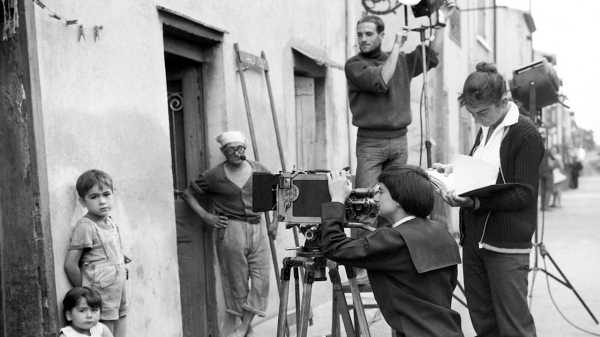
Independent filmmaking has been especially prominent in the twenty-first century because it has become the new mainstream. It has largely taken over for Hollywood studios in producing the kinds of realistic dramas and comedies that were long the core of studio fare. (The studios have been squeezed between the popularity of prestige TV and the international profitability of franchise films.) In the twentieth century, the production of independent films was no less varied or artistically accomplished, although many of the best of them went largely unseen. Instead of embodying the mainstream, twentieth-century independent filmmaking formed a crucial alternative to it—a virtual counter-history of cinema. A list of the best of these movies reveals the exclusions and suppressions that many of the prime artistic voices of filmmaking endured in the era of studio hegemony, and not just in the United States.
Many of the greatest filmmakers worked for major studios in Hollywood and around the world, and sometimes even found sufficient artistic freedom there to create enduring masterworks. The backstory of a movie’s production isn’t a mark of its artistic merits. Still, though the art of filmmaking is primarily the art of directing, much of what’s ascribed to direction is a matter of production. Directors’ personalized production methods—their approach to every aspect of filmmaking, from departmental organization to the casting and directing of actors, from the crystallizing of stories with or without scripts to the techniques of cinematography and sound recording—are often at the root of their more comprehensive onscreen originality.
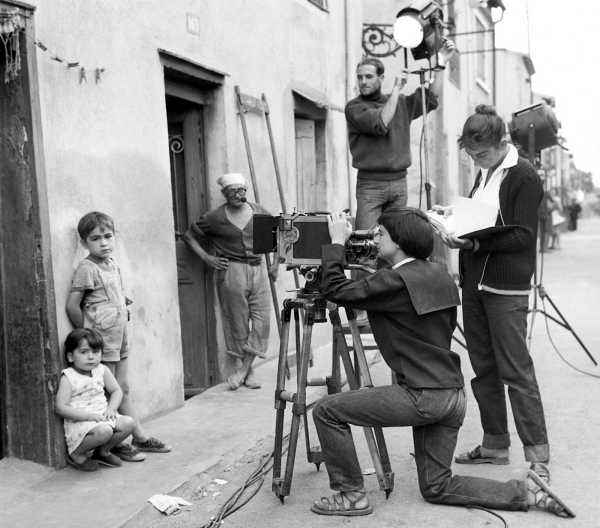
Agnès Varda (kneeling) shoots a scene for “La Pointe Courte.”Photograph from Everett
The center of independent production is infrastructure: filmmakers building their own authority regarding time, money, and matériel into the essence and foundation of their artistic authorship, whether out of necessity or desire. Yet the very concept of independent filmmaking has long remained unstable, vague, and ambiguous—and the way that it’s defined in the profession doesn’t necessarily reflect the most significant realities of the business. For instance, today’s independents—perhaps defined as anyone working outside the studios—range from D.I.Y. filmmakers with budgets in the hundreds to nine-figure super-productions, if you count directors who work with Amazon and Netflix. The streaming giants have afforded some major filmmakers major resources and a wide berth of artistic freedom; yet, in the essential matter of filmmakers developing their own structures and methods of production, they—and other large-scale independent producers, such as A24—remain akin to the studios.
A bit of history helps to clarify the idea. For instance, in the high studio era, from the nineteen-twenties through the late forties, studios were vertically integrated—they produced films, distributed films, and owned their own movie theatres. As a result, the definition of independence was, in practice, very wide, embracing such smaller studios as Republic and Producers Releasing Corporation. But, in 1944, a small yet powerful group called the Society of Independent Motion Picture Producers—its ranks including Walt Disney, Orson Welles, Charlie Chaplin, and Mary Pickford—urged the federal government to renew an antitrust suit against the major studios. (For the record, the suit was then revived and the Supreme Court ruled against the studios in 1948, and the resulting changes in the industry helped to foster a mighty outpouring of creative energy in Hollywood during the fifties.)
Even then, the essence of independence was clear: it meant art made under artists’ own aegis. That holds true at all levels of production, whether the ultra-high budgets of the colossally wealthy Chaplin (who’d made a fortune in his first decade in the film business) or the ultra-low ones of student filmmakers. That’s why I’m compiling this list in a minimalist spirit: it’s limited to movies that, as far as I can determine, weren’t made by an entity or a producer in the business of making films—unless it’s director’s own production company and principally produces his or her own work. (The ideal of artist-owned productions was already advocated, in the fifties, by François Truffaut, as a precondition for the revolution in cinematic form that he anticipated.)
This criterion leaves out some of my very favorite films that are widely acclaimed as independents—in particular, ones which were produced by a branch of public television. With few exceptions, I’m not including short films or documentaries, because the production systems and structures for those are different from those of fiction features. And there are numerous countries with vital cinematic traditions that are not represented on this list because they never generated notable independent productions, in some cases owing to government surveillance and repression.
The dominance of the studios has both formed and deformed the American cinema and world cinema. It has also warped the very relationship of filmmakers to the practice of filmmaking—even psychologically. Many filmmakers attempting to take part in the business have found themselves in a grotesque Freudian struggle with Big Cinema Daddy, unable to dissociate their creative energy and their aesthetic drive from a battle with a pseudo-mythological giant. One of the paradoxes of independent filmmaking, even at its most extreme, is that it’s essentially dependent, and not just financially—it relies on a functioning film industry for equipment and services. I’m reminded of Gertrude Stein’s psychological distinction, in “The Making of Americans,” of “the independent dependent having attacking more or less sometime in them” and the “dependent independent who can have sometime resisting in them.” The overt history of cinema is that of attack mode; the alternate history is one of resistance.
If Hollywood is identifiable by its exclusions, independent filmmaking offered the chance for a crucial corrective—a realm for female filmmakers, Black filmmakers, and others who, by dint of their identity or their ideas, had no place in the mainstream. Often, they made great films, which deserve a place in the canon alongside any that achieved far more acclaim at the time. Some of the most famous movies by some of the most famous directors would never have been made had the directors not created their own production companies. These above-ground masterworks, often despised in their time, are closer in spirit and art to some of the student films and quasi-amateur projects on the list than they are to the movie mainstream of their day. This list of sixty-seven reflects the spirit of resistance—artistic, political, economic, and social—that’s at the very heart of the movies, classic and modern.
In chronological order:
1. “The Symbol of the Unconquered”1920, directed by Oscar Micheaux
Hollywood established its commercial preëminence by way of D. W. Griffith’s “The Birth of a Nation,” a film so racist and so stuffed with demagogic lies that it reinvigorated the K.K.K. When the Black writer Oscar Micheaux formed a company to make movies on his own, he began with this candid and confrontational depiction of the Klan’s brutality, its members’ efforts to steal the resources of Black people, and the moral right to physical resistance.
2. “The Blot”1921, Lois Weber
Lois Weber was among the most inventive directors of a uniquely inventive time in film history: the nineteen-tens, when the feature film was developed. She also forged a path for her own creative freedom by launching a production company and producing her own films, including this masterwork, a nuanced tale of economic injustice and outrageous inequality, about an impoverished scholar whose desperation leads to family disaster and the temptation of crime.
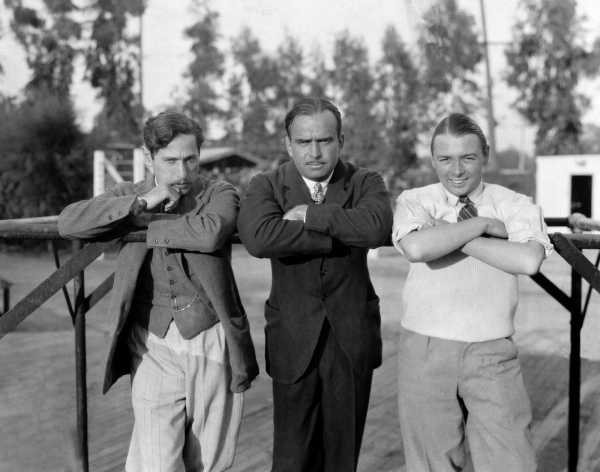
Photograph from Everett3. “The Salvation Hunters”1925, Josef von Sternberg
He was later known as the director who propelled Marlene Dietrich to international stardom with the German film “The Blue Angel” in 1930 and then collaborated with her in Hollywood in a half-dozen sinuously erotic and stylized dramas. But Josef von Sternberg’s illustrious career as a poet of humiliation began here, with this caustic, moralistic, grimly naturalistic drama of poor waterfront drifters. He co-produced the movie with its lead actor, George K. Arthur, and provided most of the budget—not even five thousand dollars—out of his own pocket. Despite its bare-bones production, von Sternberg adorned “The Salvation Hunters” with the kind of décor-tangled and shadow-streaked images that he’d soon create elaborately (and expensively) in studios.
4. “The Gold Rush”1925, Charlie Chaplin
Any and all of Charlie Chaplin’s classic features could be on this list; he had both the wealth and the artistic need to be answerable to no producer but himself. Having freed himself from studio constraints, he displayed his defiant empathy with the burdened and the excluded, along with the mighty range of his comedic genius and the refined precision—on a vast scale—with which he realized it.
5. “People on Sunday”1929, Edgar G. Ulmer and Robert Siodmak
The original mumblecore film. This drama was made in Berlin with nonprofessional actors (including a cab driver, a film extra, a shop clerk, and a model), who performed scenes developed on the basis of their own daily lives and jobs. It was co-written by a streetwise journalist with little movie experience named Billy Wilder.
6. “Vampyr”1932, Carl Theodor Dreyer
Independence can take flight with success—or serve as protection after failure. In 1928, Carl Theodor Dreyer made one of the greatest of silent films, “The Passion of Joan of Arc,” which nonetheless was a commercial flop. For his next film, a talking picture, he sought private funding and made wild, wondrous use of it in a macabre tale that, in its hectic visions and hallucinatory doings, is an apogee of Surrealist cinema.
7. “Land Without Bread”1933, Luis Buñuel
Reënactments were inextricable parts of many great early documentaries. But in Luis Buñuel’s third film, with money provided by an anarchist peasant who’d won a lottery, he turned the mockumentary—or, rather, the fake documentary, relying on reënactments not to depict unfilmable events but to dramatize unspeakable ideas and deride unchallenged realities—into a provocation no less riotous than his prior, expressly Surrealist films “The Andalusian Dog” and “L’Âge d’Or.”
8. “The Rules of the Game”1939, Jean Renoir
Toward the end of the nineteen-thirties, Jean Renoir—who, throughout the decade, had unleashed a mighty torrent of directorial inventiveness—co-founded a production company, which made only one movie, his supreme masterwork. Renoir took full advantage of the freedom that the company afforded him, both thematically and technically (shooting many takes, featuring actors improvising dialogue, and revising the story in the course of filming). “Rules” is a grand-scale and virtually operatic romance that blends comedy and tragedy, modernity and tradition, in a grand but scathing panorama of French life. He showcases the social frivolity and stifling attitudes that were leading France to moral collapse at a time when democracy was threatened from within and without.
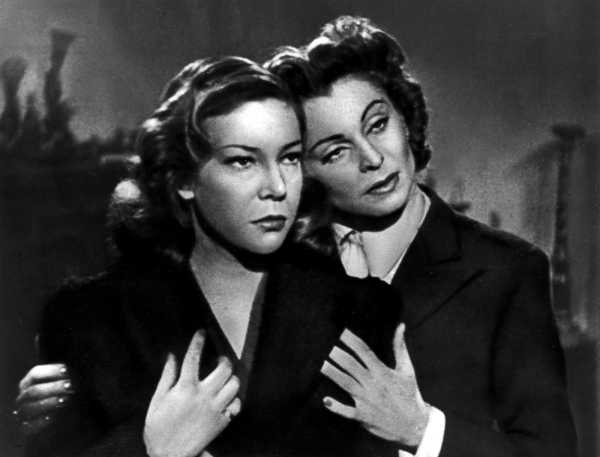
Photograph from Everett9. “Rome, Open City”1945, Roberto Rossellini
The primordial film of the Italian resistance to Nazi German occupation was financed by a wool merchant and an American soldier. Roberto Rossellini, unencumbered by any production company’s political sensibilities, showed Communists’ vigorous role in the fight against Germany and a Catholic priest’s high-risk involvement in the resistance. He also didn’t flinch from the depraved violence of the occupiers, whom many Italians had supported and aided.
10. “Le Silence de la Mer”1947, Jean-Pierre Melville
Jean-Pierre Melville, born Grumbach, to a Jewish family in France, was active in the Resistance and kept his nom de guerre after the Liberation. He made this film—his first feature—not just independently but (working without official authorizations) clandestinely. Based on a celebrated novel, it concerns a French family’s relationship with a German officer who, during the Occupation, is quartered in their house.
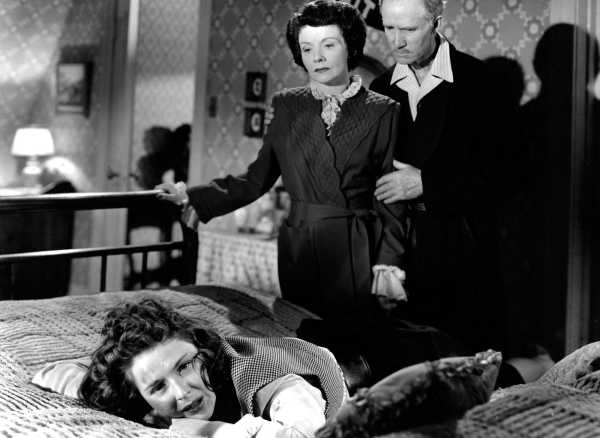
Photograph from Everett11. “Outrage”1950, Ida Lupino
Already a celebrated actress, Ida Lupino co-founded a production company with the stated intention of making “pictures of a sociological nature” and treating “serious themes.” Under its aegis, she directed a set of (only) six movies. The high point was this 1950 drama, which is centered on the isolation and mental disturbance that a woman suffers after she is raped, amid pressure to keep silent about her experience.
12. “Othello”1952, Orson Welles
Working as an actor in mostly mediocre movies to finance his filmmaking passion, Orson Welles spent years travelling between Italy and Morocco to make his second Shakespeare film, and the first in which the visual style is extravagant enough to match a movie filled with Shakespearean language. (He also plays the title role, in bronzing makeup—a form of blackface that appears intended to suggest, not depict, Othello’s Blackness, consistent with Welles’s interpretation of the play, emphasizing the tragic hero’s military background, not his racial identity.)
13. “Little Fugitive”1953; Raymond Abrashkin, Morris Engel, and Ruth Orkin
Even the camera is self-produced for this intimate yet panoramic view of childhood in hardscrabble Brooklyn. Orkin and Engel, who were photographers and a married couple, and Abrashkin, a writer (using the pseudonym “Ray Ashley”), joined forces for this endearing but pain-racked story of a seven-year-old boy. Tricked into believing that he killed his older brother, the child flees to the farthest place he knows: Coney Island. His staged and improvised adventures are dramatized by way of a furtive, documentary-based plunge into ongoing public life, filmed with a customized military-combat camera that Engel wore at his waist, like a primordial steadicam.
14. “La Pointe Courte”1955, Agnès Varda
While the fanatical cinephilic young men of Cahiers du Cinéma were plotting to take over the French film industry, another of their generation, a photographer named Agnès Varda—who knew little of classic movies or the Cinémathèque—was inspired by her own experiences in the South of France and by William Faulkner’s “The Wild Palms” to make a drama, on location and largely self-financed, about a Parisian couple in crisis at a seaside town amid the local traditions and conflicts of the town’s residents.
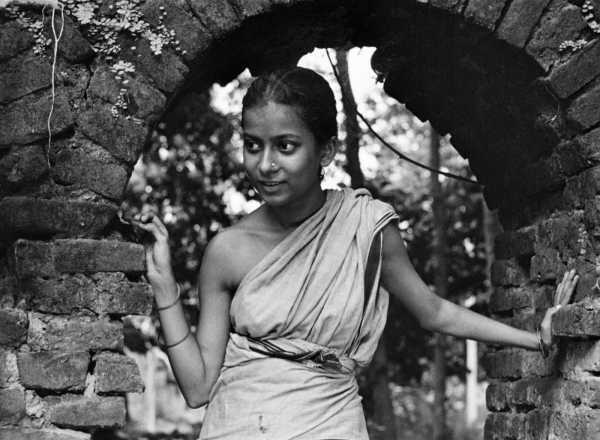
Photograph from Everett15. “Pather Panchali”1955, Satyajit Ray
This intimate coming-of-age story was funded with slender private investments and a government grant—an arduous, bit-by-bit financing that caused the shoot to stretch out over two and a half years. It features a boy named Apu (this was the first of what would be Ray’s “Apu trilogy”) and his sister, Durga, as their family faces the economic and natural cruelties of village life. The tale of a painful refinement of a child’s artistic sensibility was the first flowering of the magisterial Ray’s own cinematic power.
16. “Mister E”1959, Margaret Conneely
The most extreme independence is the amateur’s. Margaret Conneely worked with essentially no budget and no technique recognizable as belonging to any film industry at all. She created movies with friends and family that, at their best, embody a hectic and teeming cinematic imagination (albeit in short and compressed form)—as in this comedic drama about a woman’s oddball efforts to make her gadabout husband jealous enough to stay home with her.
17. “The Cry of Jazz”1959, Edward O. Bland
At a time when jazz writing was dominated by white critics who were promoting laid-back white musicians as the cutting edge, Edward O. Bland, who put in money from his day job (at the post office, as he recalled), made this stark, far-reaching, essay-like blend of fiction and documentary—featuring performances by Sun Ra and his Arkestra—in which Bland asserts and analyzes the essential connection of jazz to Black American life, history, politics, and the civil-rights movement.
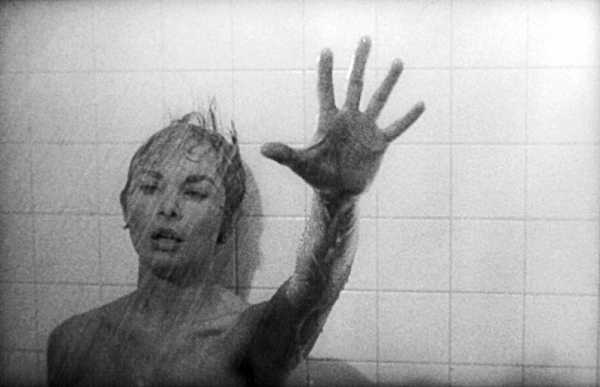
Photograph from Everett18. “Psycho”1960, Alfred Hitchcock
When Alfred Hitchcock’s idea for this movie was rejected by Paramount, where he was under contract, he put his own money into it and made his most outlandish, most extreme work—which, more than any of his other films, conveys horror and derangement at a virtually metaphysical level.
19. “Blast of Silence”1961, Allen Baron
There’s something apt about a film noir produced by people thrown out of the business for their misdeeds. At first, Allen Baron self-financed this coarse-textured, sharply observed drama of a hit man (played by the director) on a New York job, but he got finishing funds from a trio of producers that included a fraudster and a TV game-show rigger. The resulting movie is among the most rapturously lurid visions of the city underworld—and of the tragic obtuseness of the criminal life.
20. “The Exiles”1961, Kent Mackenzie
The director Kent Mackenzie started with a few hundred dollars of his own money and raised small private investments (none larger than two thousand dollars) in the course of this shoot. He worked closely with Native Americans living in the Bunker Hill neighborhood of Los Angeles to unfold their inner lives in their own voices and performances. The documentary essence of this fiction feature joins the participants’ experiences and Mackenzie’s ardent visual compositions, yielding a work of radical subjectivity.
21. “The Connection”1961, Shirley Clarke
Shirley Clarke worked with an Off Broadway producer to raise money for her first feature, using small private investments in a limited partnership. The film was itself based on an Off Broadway production—a play-within-a-play about jazz musicians and others waiting for their drug dealer. Clarke turned it into a movie-within-a-movie about the musicians (including the pianist Freddie Redd, who wrote the music, and the saxophonist Jackie McLean) and their friends—and about the emotional and ethical dangers of documentary filmmaking. In the process, Clarke made a movie at the forefront of both cultural and artistic modernity.
22. “The Bakery Girl of Monceau”1962, Éric Rohmer
After the commercial failure of Éric Rohmer’s début feature, this short film was the first movie made under the aegis of his own production company (which, long after his death, remains a prime mover in the French film industry). It’s the story of a young man who is caught between two women of different classes, and it definitively established the style that is virtually synonymous with Rohmer’s name: intellectualized love stories in dialectical form.
23. “Carnival of Souls”1962, Herk Harvey
This daringly ambitious and technically ingenious horror movie by the industrial-film director Herk Harvey is set in Salt Lake City and in his home town of Lawrence, Kansas. It’s about a dead woman who comes back to life and finds herself detached from the living and haunted by the dead, and it finds a distinctive American tone for the alienation of Antonioni or the metaphysical terror of Bergman.
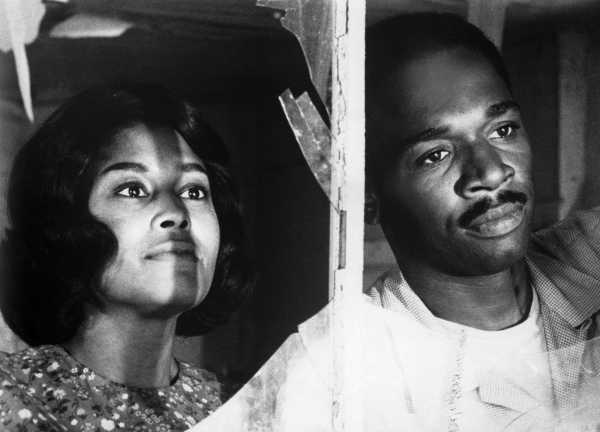
Photograph from Everett24. “Nothing but a Man”1964, Michael Roemer
At a time when there was no Black director working in Hollywood or even on off-Hollywood, non-studio dramas, Michael Roemer—a white director then working in documentary filmmaking—travelled through the South with his producing and writing partner, Robert M. Young, to meet Black residents and learn of their daily lives amid the restrictions and terrors of Jim Crow. They made their film in New Jersey, for the safety of the cast and crew; it revolves around the romance of a young working man (Ivan Dixon) and a schoolteacher (the singer Abbey Lincoln) amid the class divisions in a Black community, and the violence and the economic deprivations under white rule. It’s as much a story of private anguish, depicted with sculptural grandeur, as it is a diagnosis of the roots of American political pathology.
25. “La Dérive”1964, Paula Delsol
Paula Delsol was one of the few female directors working in France at the time of the New Wave. This low-budget drama, which focusses on a woman returning from Paris to her rural home town and becoming both a source of scandal and a target of male predators, unfolds the unchallenged aggressions and assumptions of French society in meticulous, agonizing detail.
26. “Identification Marks: None” (“Rysopis”)1965, Jerzy Skolimowski
Almost by definition, independent filmmaking wasn’t supposed to exist behind the Iron Curtain, where all production was state-controlled. But, in the early sixties, the Polish director Jerzy Skolimowski found a way to work outside the system. While in film school, in Lodz, he directed and starred in a series of short student films, each of which was secretly a segment of a feature film; in 1964, after his graduation, he stitched them together, and the result was released the following year as a feature. It’s a classic of a young man’s alienation from his society’s repressive regimentation—from its militarism, from its moralism—and it has a pugnaciously free style to match. (Skolimowski, now in his mid-eighties, made a big splash last year with a new film, “EO.”)
27. “Stranded”1965, Juleen Compton
An unsuccessful actress, Juleen Compton made good money in the real-estate business and self-financed this ambitious, antic, bitterly frank drama—not least, in the hope of launching her acting career—and made an American movie in the manner of the French New Wave. Compton herself stars as an American woman on a romantic spree in Europe whose pursuit of adventure and assertion of sexual freedom clashes with gender stereotypes and conformist pressure.
28. “Persona”
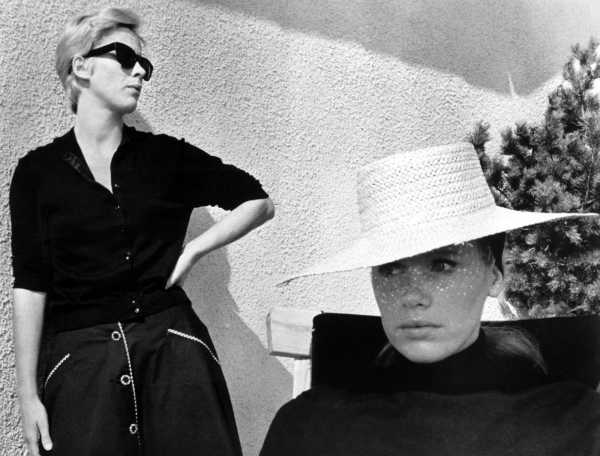
Photograph from Everett1966, Ingmar Bergman
Ingmar Bergman went outside the production structures of the Swedish cinema and found private funding for a film that he sold as a low-budget chamber experiment. It was his most original work to date—and, indeed, his most extreme and most inventive film over all, the high point of his career, and the start of his history-making collaboration with Liv Ullmann.
29. “Not Reconciled”1965, Jean-Marie Straub and Danièle Huillet
So independent that it was endangered, Jean-Marie Straub and Danièle Huillet’s first feature is based on Heinrich Böll’s novel “Billiards at Half-Past Nine.” They adapted the book without authorization—borrowing money on the premise of filming a test scene of the novel and instead making the entire film—and therefore risked it being banned and destroyed. Pressing three generations of one family’s history—and German history—into a mere fifty-five minutes, the movie is among the cinematic highlights of the sixties: one of the most radical works of radical times, as original in its angular modernism (a sort of twelve-tone music in movie form) as in its candid political anger.
30. “David Holzman’s Diary”1967, Jim McBride
David Holzman is a fictional character living something like the real life of the movie’s director, Jim McBride, who plowed a tiny advance for a book on cinéma vérité into this scrounged and scruffy faux documentary. It simultaneously mocked the filmmaker’s presumption of showing the truth and nonetheless succeeded in showing it: by documenting New York street life, the ambient power of television and Top Forty radio, the looming menace of
31. “Spring Night, Summer Night”1967, Joseph L. Anderson
The history of a rural Ohio mining town—its boom years during the Second World War and its subsequent decline—is the backdrop for Joseph L. Anderson’s deeply rooted local drama. It’s a money-centric, socially diagnostic work of terrifying mythology: the story of a young man who returns home from military service and, upon reuniting with his shattered family, begins a relationship with a young woman who is his half sister. The filmmaker, who was teaching at Ohio University, staffed and cast the film entirely from the university community.
32. “Playtime”1967, Jacques Tati
Jacques Tati built a skyscraper city—not full-sized but surprisingly close—on the outskirts of Paris for this wildly ambitious comedy of the regimentation and disorientation that the architecture of technological modernity imposes on its users, the human disconnections that it inflicts, and the anarchic spirit of revolt that it inspires. He stars in the film as his longtime character, Monsieur Hulot, who, with his geometric antics, moves through the glass-and-metal settings like a walking question mark. Tati also produced the film with his own company, financed much of it with his own money, and, when he was able to get loans, mortgaged his home and put up his assets as collateral. The movie is a cinematic masterwork, a colossal achievement of infinitesimal nuances; yet it flopped at the box office, bankrupting him.
33. “Faces”1968, John Cassavetes
John Cassavetes’s fourth feature is the most consequential of all Hollywood-proximate independent films. He did more than extend his previous work—he developed an entirely original style that fused text, image, and performance. He centered that style on the most distinctive modern actress, Gena Rowlands (who was also his wife), in a story of the modern suburban bourgeoisie at the breaking point of financial striving and romantic longing amid the desperate fading of youth. To make the film, Cassavetes contributed his own income as an actor in others’ movies and TV shows, and he and Rowlands mortgaged their house (which is also one of “Faces” ’s key locations).
34. “Symbiopsychotaxiplasm: Take One”1968, William Greaves
As an actor and a director, William Greaves put both skills under the cinematic microscope in this pioneering multilevel metafiction. He brings a crew and a cast (or, rather, several different casts) to Central Park to perform a scene under different circumstances—and he films himself, as director, reacting to those different circumstances. The results (financed by one of Greaves’s former students) reveal as much about the politics of social hierarchies as about the art of performance.
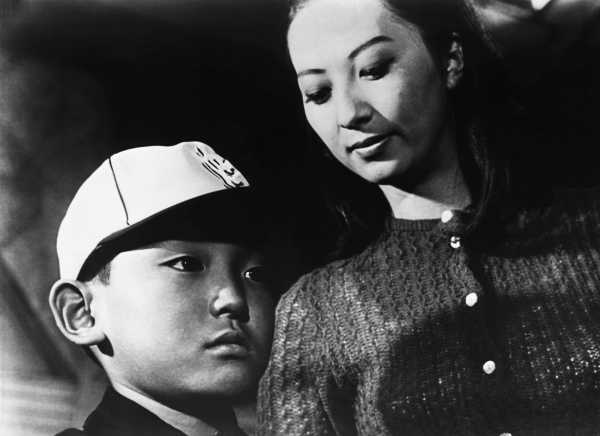
Photograph from Everett35. “Boy”1969, Nagisa Oshima
Rejecting studio restrictions, the precocious and prolific Nagisa Oshima, while still in his twenties, set up his own production company and launched a series of confrontational, denunciatory films that link private corruption and political decadence. This scathing parody of sentimental family dramas, based on a true story, is centered on a child who, raised by a father seared by traumas of the Second World War, is forced to feign being hit by cars in order to extort settlements from drivers.
36. “Wanda”1970, Barbara Loden
The only feature directed by Barbara Loden, who also stars, is a sort of crime drama, about a poor woman in coal country who leaves her family and takes to the road with a robber who lures her into his absurdly dangerous plan to hold up a bank. It’s one of the cinema’s deepest, rawest, most vulnerable portraits of a woman seeking liberation from oppressive tradition.
37. “Sweet Sweetback’s Baadasssss Song”1971, Melvin Van Peebles
Already the director of one of the great non-studio dramas, “The Story of a Three-Day Pass,” Melvin Van Peebles largely self-financed this furious tale of police violence against Black people and one Black man’s unplanned revolt: a sex-show worker and celebrated stud (played by Van Peebles), who, to defend a member of the Black Panthers, assaults police officers and goes on the run. Van Peebles’s fervent and fragmented aesthetic matches his film’s spirit of radical revolt.
38. “Touki Bouki”1973, Djibril Diop Mambéty
In effect the first film of a Senegalese New Wave, Djibril Diop Mambéty’s début feature, centered on a young couple who are desperate to leave Dakar for Paris, exuberantly dramatizes the intellectual colonialism exerted by Europe, the conflicting allure of traditional religion and revolutionary politics, and the flashily absurd social tangle of city life.
39. “As Above, So Below”1973, Larry Clark
While at U.C.L.A., Larry Clark (the director best known for the great jazz-centered drama “Passing Through,” from 1977) made this featurette, a political fantasy presenting Los Angeles under a state of siege. It focusses on one U.S. military veteran, a Black man, who finds himself drawn into a revolutionary group that is resisting martial law. The film’s paranoid air of espionage and infiltration, of daily life amid oppression, blends visionary imagination with depictions of the real social woes of the day.
40. “Duvidha”1973, Mani Kaul
Getting his production going with money from a painter friend, Mani Kaul combined mythology and realism to make a dramatic feature that is itself painterly—one of the most visually alluring of all independent films. It’s a tale of a newlywed young woman who, left alone when her husband leaves home to make money, is visited by a ghost who takes his form.
41. “The Werewolf of Washington”1973, Milton Moses Ginsberg
This outrageous horror comedy about the Nixon Administration was the second and last feature by Milton Moses Ginsberg (who died in 2021). It stars Dean Stockwell, whose Hollywood career was then at low ebb, as a journalist who, after a posting in Hungary, returns to the capital as a Presidential aide with an insatiable thirst for blood. The extravagant satire targets authoritarian Republican policies while also opening the (Water)gate to uproarious physical comedy.
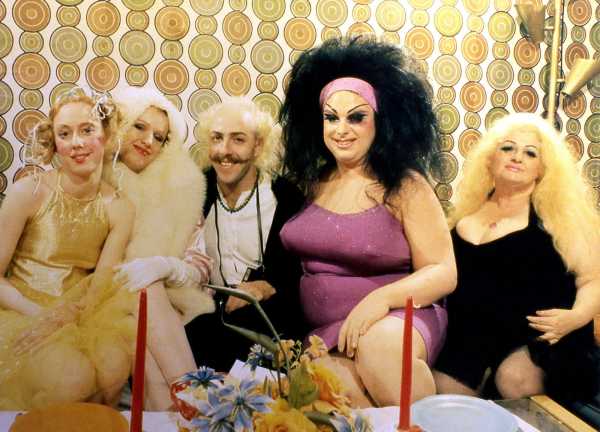
Photograph from Collection Christophel / Alamy42. “Female Trouble”1974, John Waters
John Waters expanded the scope of his self-produced cinema of exuberant scandal in this wild and colorful medley of Hollywood-genre takeoffs and put-ons, starring Divine as a high-school student on a cross-country run of crime and sex who thrives in the lurid light of celebrity and notoriety.
43. “About Some Meaningless Events”1974, Mostafa Derkaoui
In order to make a movie that confronted both the political corruption of Morocco and its conventional film industry, the Moroccan director Mostafa Derkaoui launched his own production company and shot a self-questioning docufiction, one that blends in-the-street interviews and the crew’s own discussions with a crime drama and interrogates the writer-director’s own motives in making a political film.
44. “Effi Briest”1974, Rainer Werner Fassbinder
Already internationally celebrated while still in his twenties, Rainer Werner Fassbinder channelled his own substantial earnings into this elaborate and grandly stylized period production, which stars his longtime collaborator Hanna Schygulla. Fassbinder had been long obsessed with Theodor Fontane’s 1893 novel, about a young woman who is married off miserably to a stuffy man and finds escape in an affair with a dashing young officer—more or less the German “Madame Bovary.”
45. “Bush Mama”1975, Haile Gerima
The so-called L.A. Rebellion, mainly comprising Black directors who were studying at U.C.L.A., formed the most significant group of American independents in the twentieth century. Haile Gerima’s master’s thesis, one of the first features to emerge from that movement, is also one of the most original. It’s the drama of a woman in the predominantly Black neighborhood of Watts who confronts bureaucratic harassment and police violence and is roused to action. Gerima’s film unites a panoramic view of community with deep-rooted reflections of the protagonist’s inner life.
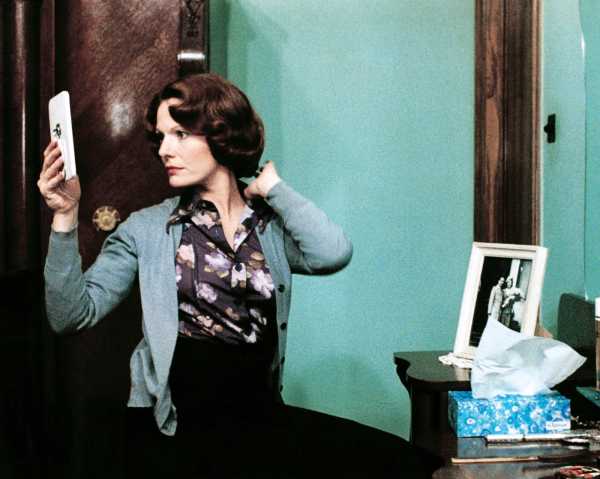
Photograph from Everett46. “Jeanne Dielman, 23 quai du Commerce, 1080 Bruxelles”1975, Chantal Akerman
Yes, this, too—the No. 1 movie in the 2022 Sight & Sound “Greatest Films of All Time” poll. It was made with her own production company, financed in part by a grant and loans, and this administrative freedom allowed Chantal Akerman to throw out the script she’d raised money for. She started over with this drama about the obsessive and nearly choreographic daily rituals of a mother and sex worker in Brussels whose life is shadowed by memories of the Holocaust. Akerman’s film reprocesses the terms of melodrama into a form as close to documentary as to rigorous stylization and gives the habits of ordinary life vast psychological and historical dimensions.
47. “Not a Pretty Picture”1976, Martha Coolidge
Martha Coolidge expanded the concept of documentary filmmaking by way of fiction, and then turned the equation around and filmed documentary scenes about the creation of those fictions. And she did it in order to tell an unspeakable story, about her experience as a victim of rape, that spotlights how the very forms of conventional drama can become obstacles to personal expression.
48. “Killer of Sheep”1977, Charles Burnett
One of the L.A. Rebellion filmmakers, Charles Burnett shot his first feature—also a thesis film—mostly in 1972-73. A bittersweet tale of working people’s blues in Watts, it tells the wryly lyrical story of a man who works in a slaughterhouse and is grimly submerged in a struggle to stay ahead of the bills, and the woman who stoically endures his bitter moods, amid their children’s exuberance and troubles and the rowdiness, camaraderie, temptations, and frustrations of life in a tight-knit but fraying community.
49. “Perfumed Nightmare”1977, Kidlat Tahimik
The director also stars in this madcap but sardonic tale of cultural imperialism and self-liberation, playing a Filipino villager who, in thrall to Western culture, dreams of space travel. He eventually has his American dreams shattered by acquaintance with American realities.
50. “Girlfriends”1978, Claudia Weill
Relying on grants, Claudia Weill—who had co-directed the personal documentary “Joyce at 34” with Joyce Chopra—made her first feature: the good-humored, lyrical, yet bluntly forthright story of a young woman (Melanie Mayron) in Manhattan whose efforts to establish herself as a photographer contrast with her best friend’s new life as a suburban housewife and clash with her own romantic and sexual dilemmas.
51. “The Whole Shootin’ Match”1978, Eagle Pennell
The Texan filmmaker Eagle Pennell’s first feature is the movie that inspired Robert Redford to found Sundance. Set in Austin, “The Whole Shootin’ Match” is a downbeat but rowdy comedy about a pair of ne’er-do-wells’ get-rich-quick schemes and the effect of their inflated self-regard on the women in their lives. It’s also a poetic, flamboyant look at life in the rural shadows of a modern metropolis.
52. “Blind Spot” (“The Trip to Lyon”)1981, Claudia von Alemann
In one of the great city films, the director Claudia von Alemann makes the streets and stairways, the shops and the byways of Lyon resound with the passion of history. This intimately investigative fiction follows a young German woman who arrives in the dead of summer to research the life and work of the mid-nineteenth-century socialist and feminist Flora Tristan, and becomes obsessed with finding material and mystical traces of Tristan on location.
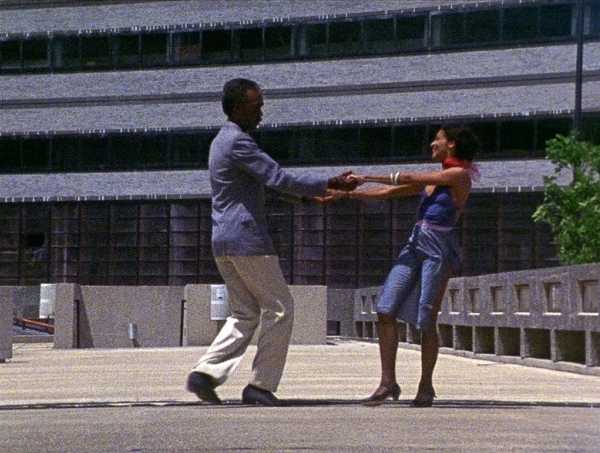
Photograph from Milestone Films / Everett53. “Losing Ground”1982, Kathleen Collins
Kathleen Collins’s second film and first full-length feature is a groundbreaking movie, with its trenchant and fine-grained depiction of the lives of a Black couple in New York: a man who’s an artist and a woman who’s a philosophy professor. It foregrounds the connection between marital conflict and intellectual crisis, between the rational organization of life and the unslaked power of irrational impulses. It’s also a film of delicate visual textures as well as exuberantly realistic musical scenes.
54. “Cane River”1982, Horace B. Jenkins
The only feature made by Horace B. Jenkins (who died before its release), this instant classic of regional cinema delves into the history and the realities of Black life in rural Louisiana. A young man of Creole heritage returns home to his family’s farm and begins a relationship with a young Black woman who’s impatient to leave the region. Jenkins’s panoramic depictions of the area’s landscapes are as nuanced as the couple’s zesty, insightful dialogue.
55. “Born in Flames”1983, Lizzie Borden
Lizzie Borden filmed over the course of five years, whenever she could scrounge the cost of film and processing, and the resulting movie is as impulsive and urgent as it is deeply considered and daringly imaginative. It’s a political musical, a vision of a socialist revolution as seen from the streets of New York, of underground youth culture as a wellspring of radical opposition.
56. “Bless Their Little Hearts”1984, Billy Woodberry
Charles Burnett wrote Billy Woodberry’s first feature, covering territory similar to that of “Killer of Sheep,” but Woodberry brings a distinct edge of conflict and emotional terror to a harsher tale of unemployment and marital crisis, centered on the psychology of Black masculinity and the resulting pressure on Black women.
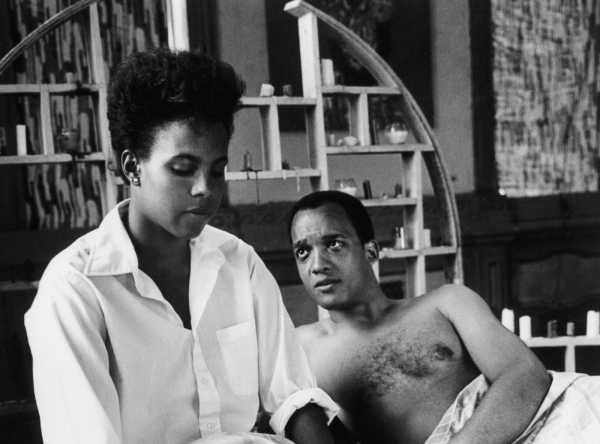
Photograph from TCD / Prod.DB / Alamy57. “She’s Gotta Have It”1986, Spike Lee
The teeming imagination and steadfast purpose that energize Spike Lee’s cinema are exemplified in his second feature, a story of three young men and the woman who fascinates them. The film proclaimed Lee’s artistry to the wider world and revealed his vision as a fervent witness of Black culture and mores.
58. “Chameleon Street”1989, Wendell B. Harris, Jr.
One of the most scintillating first films—and, dismayingly, Wendell B. Harris, Jr.,’s only feature to date. This outrageous tale of an intellectually and sexually frustrated young family man who becomes an impostor doctor, a lawyer, and a French exchange student at Yale is also one of the emblematic movies of the ambient hostility and condescension that a Black man such as its protagonist endures.
59. “Privilege”1990, Yvonne Rainer
What begins under the guise of a documentary about women’s experience of menopause morphs into a film-within-a-film, featuring a fictional surrogate for the director, Yvonne Rainer, who is white, and relying on staged interviews and metafictional scenes to explore a wide variety of women’s experiences and the very nature of political filmmaking. Casting a Black actress, Novella Nelson, as the surrogate, Rainer expands the drama to consider the overarching complex of injustices and exclusions in American society—and, for that matter, on Manhattan’s Lower East Side—including cultural ones rooted in cinematic conventions.
60. “Metropolitan”1990, Whit Stillman
Self-funding by selling his apartment, and filming clandestinely in the Plaza Hotel, Whit Stillman presents the romantic dreams and dalliances of Manhattan’s wealthy Ivy League preppies and portrays their milieu, with its old-fashioned formalities and traditions, as a fallen world of infinite privileges and scant responsibilities.
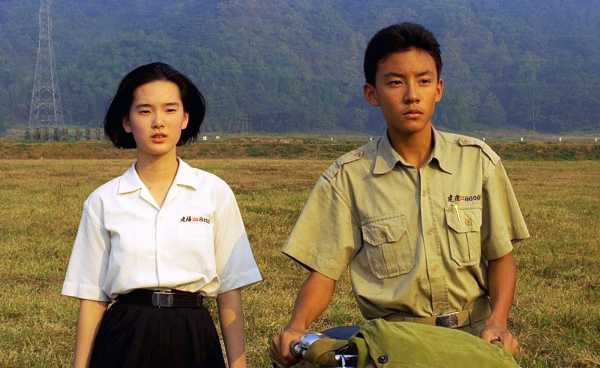
Photograph from Janus Films / Everett61. “A Brighter Summer Day”1991, Edward Yang
With private investments, the Taiwanese director Edward Yang worked through his own production company to make a dramatically ample (nearly four hours long) and fanatically detailed historical fiction and memory-piece. “A Brighter Summer Day” reconstructs the lives of rootless young people on the island in the politically repressive early nineteen-sixties—and a locally notorious murder in which they were involved.
62. “Slacker”1990, Richard Linklater
Financed with credit cards and other scroungings, Richard Linklater’s second feature—with its overflowing cast of voluble characters (including the director himself) delivering wild speculations, political paranoia, and pop-culture obsessions in torrential dialogue—proved that an ultra-low-budget movie, made on a local scale with a wryly tender view of friends and neighborhoods, could have a vast societal scope.
63. “The Hours and Times”1991, Christopher Münch
One of the masterworks of the New Queer Cinema of the early nineties, Christopher Münch’s first feature—which he made for between fifteen and twenty thousand dollars with a crew of one—is an intimate historical speculation about the trip to Barcelona that John Lennon and Brian Epstein took in April, 1963. It has the power, in cultural terms, of an experiment in nuclear physics—a series of infinitesimal collisions that can change the world.
64. “What About Me”1993, Rachel Amodeo
It took nearly three years of intermittent shooting for Rachel Amodeo to complete her first feature, in which she also stars. “What About Me” is both a harsh vision of violence and homelessness on Manhattan’s East Village and a loving view of the poetic and creative residents who nonetheless lend its degraded settings and desperate struggles a gleam of grace.
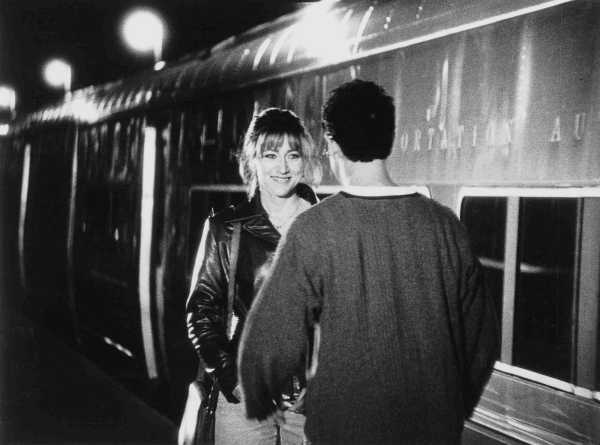
Photograph from United Archives GmbH / Alamy65. “Judy Berlin”1999, Eric Mendelsohn
Full disclosure: the filmmaker and I have known each other most of our lives; we’re practically family. Still, I’d be remiss in not giving his acerbic yet romantic first feature its due alongside its peers, as a bracing blend of tropes derived both from the independent-film scene—e.g., the frustrated aspiring director forced to move back home—and from classic Hollywood, the suburban melodrama of a housewife’s emotional liberation, aided by a twist that veers toward science fiction. The performances, by such actors as Madeline Kahn, Barbara Barrie, Novella Nelson, Bob Dishy, Anne Meara, and Edie Falco (in the title role), are among the most accomplished and idiosyncratic of the time.
66. “Compensation”1999, Zeinabu irene Davis
One of the most audaciously conceived American features of the late twentieth century, “Compensation” was assembled with technical ingenuity and a rare sense of beauty. It’s two linked stories of two Black couples in Chicago, both featuring a deaf woman and a hearing man (played by the same actress and actor, respectively), one set during the Great Migration and the other in the present day. The lyrical period reconstruction honors and reframes Black cultural legacies, pulling historical crises into the present and putting current crises into historical perspective.
67. “The Day I Became a Woman”2000, Marziyeh Meshkini
Mohsen Makhmalbaf, the filmmaker Marziyeh Meshkini’s husband, had his own production company and wrote the script for her first feature, which she directed with a visual style, an eye for symbolism, and an empathetic vigor that puts it in the forefront of modern Iranian cinema. It was reportedly created as a trio of short films to elude the official system of pre-censorship, and the movie’s freedom is as much a matter of its confrontational content as of its uninhibited aesthetic. ♦
Sourse: newyorker.com






